Water Damage Restoration in Berkeley, CA
Owning a home or business is one of the hallmarks of living the American Dream. While there are many fulfilling and positive aspects of owning property, one of the challenges that owners face is property damage. This type of damage can be caused by a range of disasters, both man-made and natural. Of all the types of property damage, water damage is among the most common.
Whether from broken pipes or heavy thunderstorms, it doesn't take a professor from Berkeley City College in Berkeley to know that water damage can be incredibly harmful to your home. Water can spread quickly throughout your property, causing damage to furniture and porous materials as it moves. In the blink of an eye, you could be looking at substantial rotting, warping, and even mold growth. That's why water damage restoration in Berkeley, CA is so important - to mitigate the damage to your home and help prevent it from happening in the future.
Trying to overcome flooding and other water-related disasters on your own can seem like a lost cause. But with Disaster Response by your side, you don't have to lose hope. As a local water damage clean-up company, we provide comprehensive restoration services to properties of all sizes in Berkeley. From the first time we assess your water damage to the time we mitigate and restore, we're here for you.

Dealing with property damage can be overwhelming. You're likely concerned about a few key things:

Navigating the insurance claim process
We guide you through every step, ensuring you understand the process and get the most out of your claim.

Scheduling for a quick and quality completion
We provide a clear timeline for restoration, prioritizing both speed and quality, so you can get back to normal as soon as possible.
You might also be thinking about:

Ensuring the safety and health of your family or employees during the restoration: Our team takes all necessary precautions to protect the safety and health of everyone involved, using the latest techniques and equipment.

Understanding the full scope of the damage and what needs to be done:We conduct a thorough assessment of the damage and provide a detailed plan of action, so you know exactly what to expect.

Knowing the costs upfront and avoiding unexpected expenses: We provide transparent pricing and a detailed estimate before any work begins, so there are no surprises along the way.

Preventing future issues, such as mold growth or structural problems: We don't just fix the visible damage—we address the root causes to prevent future issues, giving you peace of mind.

Protecting your belongings and valuables from further damage: We take extra care to safeguard your possessions during the restoration process, minimizing any further impact.



Minimizing disruption to your daily life or business operations: We work efficiently and flexibly to reduce the disruption to your routine, allowing you to continue with your life or business as smoothly as possible.

Finding a trustworthy team to handle your property with care: Our experienced and highly-trained professionals treat your property as if it were their own, ensuring the highest standard of care.

Ensuring the job is done right the first time: We pride ourselves on doing the job right the first time, using industry-leading techniques and thorough quality checks to ensure lasting results.

Receiving clear communication and updates throughout the restoration process: We keep you informed every step of the way, providing regular updates and clear communication, so you're never left in the dark.

Ensuring the safety and health of your family or employees during the restoration: Our team takes all necessary precautions to protect the safety and health of everyone involved, using the latest techniques and equipment.

At Disaster Response, It's All About You
Like Sather Gate in Berkeley, Disaster Response has been a pillar of the community for years. As a second-generation disaster response company, we know that our work is never about us. At its most basic, it's always about you—your situation, your needs, and your satisfaction. We engineer our processes to help you quickly recover from water floods and disasters. Our total focus is on you, our valued customer. And that, in a nutshell, is what makes Disaster Response one of the most trusted and highly-rated water restoration companies in Berkeley.
Instead of focusing on profit, bottom lines, and yearly projections, we make you our priority. That's why we're serious about providing expert-level disaster preparedness and response services when you need them the most. Could you imagine trying to decipher misleading fine print or dealing with a pushy salesperson when you're just trying to get your life back together? That's not the Disaster Response way, and it never will be.
We don't just clean up after water leaks, floods, or other disasters; we go above and beyond by providing a consultative approach that serves you for years to come. We assist you in dealing with insurance adjusters to ensure you get the coverage you deserve without unnecessary delays. We make it a point to meticulously review every detail of your claim and work hard to make sure adjusters understand the full extent of your losses. We can also provide guidance on how and when to engage a public adjuster to bypass inefficiencies in the insurance process. At the end of the day, we strive to provide peace of mind during your difficult time and work tirelessly to get your property back to its pre-loss condition.
The Disaster Response Difference

Professional Technicians, Technology, and Processes
In fact, we'll dispatch a team of water disaster technicians to you within three minutes. We'll also advise you on what can be done to minimize the water damage in your home or business. Our water damage restoration team will use cutting-edge technology and IICRC-approved methods to restore as much of your property as possible.

Insurance Advocacy
Disaster Response works one-on-one with you and your insurance provider to expedite the claims process and get your home back to normal as soon as possible.

Satisfaction Guaranteed
We're proud of our work and stand behind every project we complete. Our goal is to exceed expectations and provide peace of mind throughout every step of your water damage restoration process. If you're not satisfied for any reason, we'll listen to your concerns and work tirelessly to rectify any issues that need addressing.


Your Guide to Water Damage Restoration in Berkeley, CA
Water damage restoration is a key step in remediating damage to your home, both structurally and aesthetically. Damage from water doesn't just affect the walls, floors, and ceilings in your home. It can also cause deeper issues that, when untreated, can weaken your foundation significantly and lead to long-term instability.
As if that weren't enough, water damage can present health hazards to your friends, family, and pets. Mold and bacteria can grow in damp areas after water incidents, causing allergies, respiratory problems, and even visits to Elegance Berkeley in Berkeley for examination. Ignoring water damage can also result in irreversible harm to your belongings, including furniture, electronics, and sentimental items, leading to financial loss and emotional distress. Professional water clean-up services can repair the damage to your property, help protect valuable assets, and re-establish your home or business as a safe, healthy environment for occupants.
What Makes Our Water Damage Company in Berkeley, CA, Different from Others?
One of the most common questions we get at Disaster Response is, "What separates you from other water damage clean-up companies in Berkeley?" The first and easiest answer to that question centers around our commitment to customer service. We hold our clients in high regard because, without them, there would be no Disaster Response. As such, we work tirelessly to provide them with quality work from friendly and helpful technicians, regardless of the size of their home or business.
But that's just the start. Our clients recommend friends and family to our business because we prioritize the following:

Cost
Investing in damage restoration for your home is a smart move that can help reduce long-term costs. The best part? Our services are covered by insurance companies, so there's less worry about paying out of pocket.

Technicians
Every member of our team has years of experience, specialized training, and certifications in handling water damage. We prioritize our customers' well-being and meticulously attend to every detail to prevent any potential mold-related issues in the future. From single-family homes to
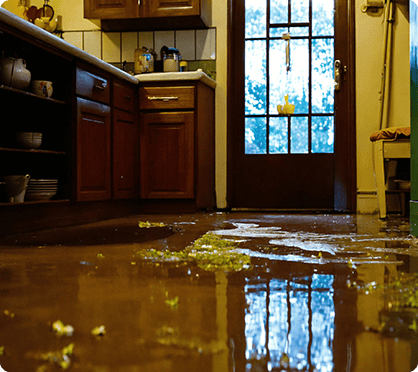
Time
Water disasters happen quicker than you might think. One moment, you're enjoying family time at Codornices Park in Berkeley. The next, you're pulling in your driveway to a flooded home. When you call our office, we'll get to work assessing the cause of your water damage and how extensive the water damage is in your home or business. From there, we'll dispatch a team of IICRC water damage restoration experts to your location.
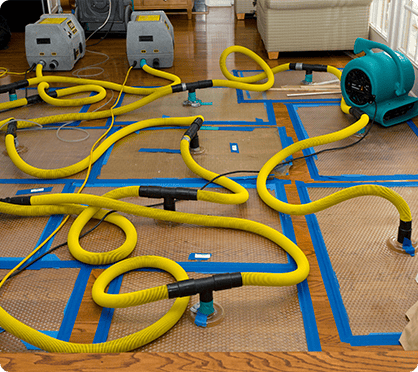
Tools
Disaster Response has made significant investments in cutting-edge water damage equipment, including inspection tools that enable thorough water removal. Our technicians have undergone extensive training to operate these machines and know when and when not to use them.

Process
For over 40 years, we have been helping with water damage issues, refining our process along the way. We can quickly find hidden damages that others might miss and document everything for your insurance company.

Reliable Water Damage Restoration Network
We aren't afraid to ask for help if it means a safer, more enjoyable environment for your family or customers. In fact, we have access to a network of industry pros who are experts in a range of water damage services. To make your life a little easier, we also work with insurance professionals who assist with the claims process.
What Does Disaster Response Fix?
As an IICRC-certified water damage contractor in Berkeley, CA, our technicians can address several areas of your home or business that have been damaged by a water disaster.
- Floors: It's very important to take the necessary time and steps to effectively dry your floors to prevent any potential water damage and mold growth in the future.
- Walls: Depending on the amount of water that enters your business or home, the structural integrity of your property may be at stake. Our technicians will evaluate the situation, inspect your property, and replace materials damaged by water.
- Rugs: If your rugs get wet during flooding or from another water disaster, they may be salvageable. We'll work hard to save all the rugs in your property.
- Furniture: Your furniture is probably expensive and may hold a certain level of sentimental value. Instead of throwing it away or donating it to Founders Rock in Berkeley, we can repair and restore it.
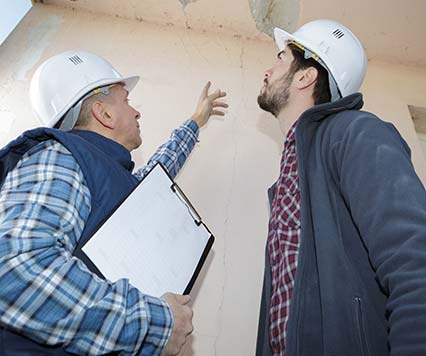
Disaster Response specializes in every kind of damage caused by rain, wind, or snowstorms. We handle water damage, mold, mildew, and more, and can be at your home or office within an hour of your call to assess the situation and put a water damage restoration plan into action.
What Tools Does Disaster Response Use for Water Damage Clean-Up?
We only use the best equipment! With our extensive experience in the Berkeley restoration industry, we've acquired state-of-the-art tools designed to tackle a wide range of challenges. This experience has also allowed our technicians to identify which type of equipment is best for a particular situation. Some of the most common water damage restoration tools we use include:

Infrared Cameras
Our infrared cameras give us the ability to see moisture in walls and ceilings that is not visible to the naked eye, almost like having "X-ray" vision. This capability allows us to detect and address trapped and hidden humidity, significantly reducing the risk of mold growth.

Moisture Meters
We use moisture meters to measure moisture levels in cellulose material. Before and after the drying process, we will conduct moisture readings in all areas of your property. If we detect moisture in an unaffected area of your building, we'll get to work quickly to dry it.

Air Movers
This equipment is designed to work in conjunction with our dehumidifiers. While our dehumidifiers extract moisture from the air and convert it to a liquid, our Air Mover helps to circulate this moisture in the air so that the dehumidifier can effectively remove it.

Ozone Generators
These advanced tools enable us to cleanse affected surfaces and the air in a more effective manner. Ozone Generators work by causing oxygen molecules to implode, making them a valuable deodorization tool.

Xtreme Xtractor
This tool is great for tackling tough moisture after water damage. It allows us to apply direct pressure to a surface, like a carpet, that has soaked up water. The pressure helps draw out the water, making it easier to remove.
Top 3 Types of Water Damage You Should Know About
Water damage can strike without warning and can wreak havoc on your property, leaving you feeling hopeless and overwhelmed. Whether it's from a burst pipe, a severe storm, or an overflowing appliance, your property needs immediate water damage clean-up in Berkeley, CA, to prevent further harm. Here are the top three types of water damage you should know about:

Clean Water Damage

This type of water damage happens from a "clean" source, such as rainwater or a broken pipe in your home. It's easier to clean up than others on this list but can still cause extensive property damage when ignored.
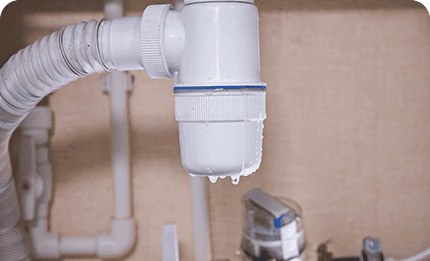
Gray Water Damage

Gray water damage stems from appliances such as toilets without feces, washing machines, and dishwashers. Gray water sometimes contains bacteria and contaminants that can make you or your family sick.

Black Water Damage

The name alone indicates the severity of this type of water damage. It's caused by backed-up sewer lines, river flooding, and standing water that supports bacteria growth. Black water presents serious health hazards and needs to be handled by professional water damage contractors.
If you suspect your home or business has been damaged by one or more of the types of water above, take the following steps:
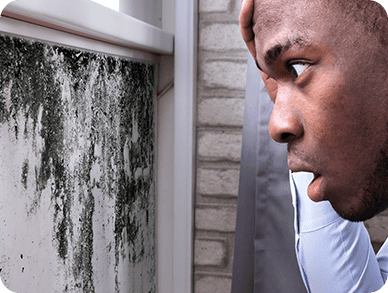
- Be Safe: Turn off all electricity running through your property. Don't go near or touch any water you believe to be contaminated.
- Stop the Source of Water: If you're able, put a stop to the water at its source. That way, you can prevent more damage.
- Call Disaster Response: Contact our water damage company ASAP for water restoration services. Our team is available 24/7 to respond to emergencies.
Our Process for Water Damage Restoration in Berkeley, CA
Having a water damage restoration company by your side who knows how to remediate moisture is a key factor in getting your life back on track. At Disaster Response, we have refined our process over 40+ years of water damage clean-up experience. That way, we can provide customers with reliable, comprehensive service when they need it the most.
We utilize powerful pumps and vacuums to eliminate standing water from your property. Swift water removal is essential in minimizing damage and lowering the likelihood of mold growth. Our team is dedicated to ensuring efficient water extraction to prevent any additional complications.
After extracting water from your property, we dry and dehumidify the impacted areas. We use industrial-grade dehumidifiers and air movers to do so to eliminate moisture from walls, floors, and furniture. Proper drying helps prevent warping, swelling, and the growth of mold.
Whenever we deal with water damage, we have to address the potential contaminants and bacteria that can enter your home. We make sure to thoroughly clean and sanitize all affected areas to create a safe living environment. This involves cleaning carpets, upholstery, and personal belongings. Our technicians also use antimicrobial treatments to prevent mold and bacterial growth.
The final step in the process is the restoration of your home to its pre-damage condition. This comprehensive restoration process may encompass a range of tasks, from minor repairs such as replacing drywall and installing new carpeting to major reconstruction efforts. Rest assured that Disaster Response is fully equipped to manage all aspects of water damage restoration, from start to finish.
- Maintenance: Have your business or home's roof, appliances, and plumbing inspected by professionals to spot early signs of wear and tear.
- Water Alarms: If there is a flood or leak in your home, a water alarm can alert you so that you can take action immediately.
- Drainage: Your home needs proper drainage systems in place at all times. To prevent water buildup, be sure to unclog your downspouts and gutters.
- Cracks and Gaps: Be sure to seal up any cracks and gaps in your property's foundation to limit water from getting inside.

The Water Damage Company in Berkeley, CA, You Can Trust
When you want a great steak, you don't go to a fast-food joint and expect a filet. You go to a Chez Panisse in Berkeley. When you need quality disaster response services from licensed professionals, you don't go to a fly-by-night shop. You contact Disaster Response.
As a local water damage clean-up business, we believe that providing clients with effective service that they can rely on in times of stress is of utmost importance. While some of our competitors prioritize profits over people, you can rest easy knowing we care about you - and that's something you can always count on when you choose our water damage company.
Whether a pipe has burst in your commercial space and your showroom is flooding, or your home has standing water from a Berkeley rainstorm, we're here for you 24/7. Contact our office to learn more about the Disaster Response difference or to schedule an inspection for your property today.
Contact Your Emergency Disaster Response Now!
Latest News in Berkeley, CA
Where To Celebrate New Year’s Eve 2024 In Berkeley
Berkeley, CA Patchhttps://patch.com/california/berkeley/where-celebrate-new-year-s-eve-2024-berkeley
BERKELEY, CA — As the clock ticks toward 2025, Berkeley is gearing up for vibrant celebrations to ring in the New Year.Whether you're drawn to a lively countdown or a more relaxed toast in a romantic setting, Berkeley is setting the stage for a memorable transition into 2025.Here is a look at some additional events happening in and around town:If you're looking to make reservations for dinner, the following Berkeley restaurants will be open, according to OpenTable:In the United States, one of the most popula...
BERKELEY, CA — As the clock ticks toward 2025, Berkeley is gearing up for vibrant celebrations to ring in the New Year.
Whether you're drawn to a lively countdown or a more relaxed toast in a romantic setting, Berkeley is setting the stage for a memorable transition into 2025.
Here is a look at some additional events happening in and around town:
If you're looking to make reservations for dinner, the following Berkeley restaurants will be open, according to OpenTable:
In the United States, one of the most popular New Year’s Eve traditions is the dropping of the giant ball in New York City’s Times Square. Other U.S. cities have their own versions of this celebration, such as the Peeps Chick Drop in Bethlehem, Pennsylvania and the giant Potato Drop in Boise, Idaho.
Find out what's happening in Berkeleyfor free with the latest updates from Patch.
The transition from one year to the next is often marked by the singing of “Auld Lang Syne,” a Scottish folk song whose title roughly translates to “days gone by,” according to Encyclopedia Britannica and History.com.The tradition of New Year’s resolutions dates back 8,000 years to ancient Babylonians, who made promises to return borrowed items and repay debts at the beginning of the new year, which was in mid-March when they planted their crops.
According to legend, if people kept their word, the pagan gods would grant them favor in the coming year. However, if they broke their promises, they would lose favor with the gods.Many secular New Year’s resolutions focus on imagining new, improved versions of ourselves.
The failure rate of New Year’s resolutions is about 80 percent, according to U.S. News & World Report. There are many reasons, but a big one is they’re made out of remorse — for gaining weight, for example — and aren’t accompanied by a shift in attitude or a plan for coping with the stress and discomfort that comes with changing a habit or condition.
Disclaimer:

 Call us 877-451-9251
Call us 877-451-9251